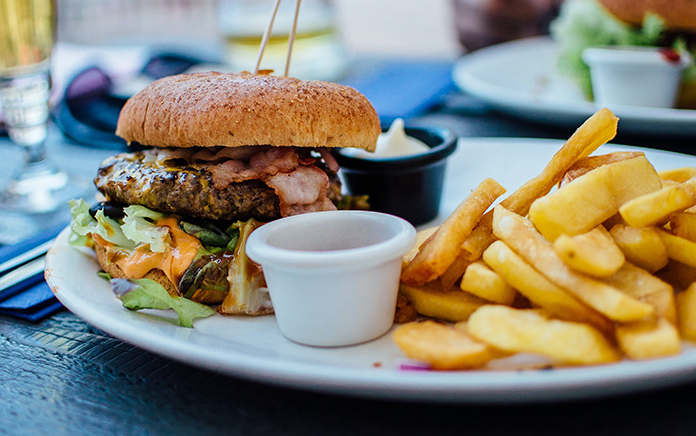Photo by Robin Stickel
Hold the pickles, no mustard. Double patty, add bacon, fried onions, that’s how you like your burger. As for chicken, there must be something salty-crunchy on the side or it’s not a complete meal.
Oh yes! Mom sure could cook. But not like this.
Yet, in Naa Oya A. Kwate’s new book, “White Burgers, Black Cash: Fast Food from Black Exclusion to Exploitation” (University of Minnesota Press, April 2023), you’ll see why fast food was slow to arrive in Black communities.
While restaurants certainly existed before the turn of the last century, fast-food joints only “took root in the early 1900s, when the earliest…chains began.” White Castle, with its oniony square burgers, is widely considered the first chain. KFC, Burger King, and McDonald‘s subsequently became the juggernauts of the industry, and something set them apart.
The first fast-food restaurants, says Kwate, “did not include Black folks,” explicitly or implicitly, when restaurants weren’t built in their areas. While high-end establishments and wealthier homes employed Black waiters, fast food was “almost exclusively White,” from kitchen to booth.
In the 1920s, though, franchisees started noticing that they were leaving money on the table. Slowly, fast-food restaurants began to appear in areas once ignored – possibly, says Kwate, for profit or perhaps because developers saw it as a way to keep Black diners away from White neighborhoods.
There was controversy over the new additions. Members of both races thought the restaurants were “a nuisance.” After a time, however, established restaurants found themselves in neighborhoods that had become “Black” as a result of what was called “White flight.”
By the latter half of the 1960s, Black investors were finally invited to buy in as franchisees. In addition, some White franchise operators were ordered by their home franchise to sell a percentage of their sites to Black citizens. While this brought the industry closer to the equality Black operators wanted, it came with a price: by the turn of the 21st century, Kwate writes, “studies began to mount… showing that residential proximity to fast food mattered for health.”
“Black youth were especially at risk,” she says.
Like a triple-patty super-sized sandwich, “White Burgers, Black Cash” is a much heavier read than might be expected at first glance. Kwate, an associate professor of Africana studies and human ecology at Rutgers University, dives deep into her subject, with research that begins years before the first White Castle opened.
The narrative includes neighborhood names, street names, and competitors’ locations, which likely won’t mean much to many readers. There are pictures, too, but those often lack adequate context.
Still, it’s worth biting into this book because of its wider focus on racism and what White America was doing at this time, as well as its inclusion of social history that is relevant to this subject.
Readers who consume this book slowly, thoughtfully chewing on its information, will get more out of its content than those who want a fast book about fast food. “White Burgers, Black Cash” deserves deliberate reflection, and you won’t even need fries with that.



